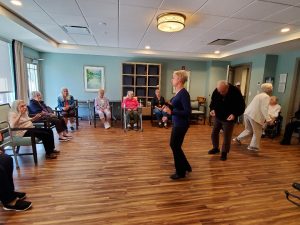When I placed my mother in a long-term care community at the age of 95, the cost of her care in assisted living was about $6,000 per month. That was over 3 years ago. Now the cost of assisted living can run between $6,000 to $9,000 per month depending upon how much help a person needs and which community is chosen. Skilled nursing care can run $9,000 to $17,000 per month depending upon the community.
My mother purchased her policy in the 1980s when long-term care insurance was a newer product on the market. She asked me if I thought the purchase was a good idea, and I said, “Absolutely!” What she purchased was a policy that paid $100 per day, up to a maximum of $143,000. She had a 90-day waiting period, which meant she had to pay the first three months of her care out of her own pocket, or $18,000. She didn’t purchase an inflation guard rider, which would have increased the benefit by several percentages on an annual basis in order to keep up with inflation. Therefore, the policy covered a little over half of what her care cost on a monthly basis. She had to pay the balance of $2,500 a month out of her pocket.
Now, there are different types of long-term care insurance available. Some are traditional like the policy my mother bought. Others are hybrid products that consist of life insurance products with a long-term care rider. In any event, trying to self-fund a stay in a long-term care community can be devastating. Illinois is one of the toughest states in which to obtain Medicaid, which is the federally funded and state administered coverage for people who do not have the funds to pay for long-term care. Because the State of Illinois is so far in arrears with reimbursing nursing homes for Medicaid recipients, many nursing homes have de-certified the number of Medicaid beds they have available. Many nursing homes are also look for a resident to pay between 1 to 2 years privately before filing a Medicaid application. Therefore, Medicaid isn’t a resource to be relied upon for long-term care. In addition, Medicare only covers short-term stays in a rehabilitation skilled nursing community.
 Chicago Senior Living Advisors Blog
Chicago Senior Living Advisors Blog


